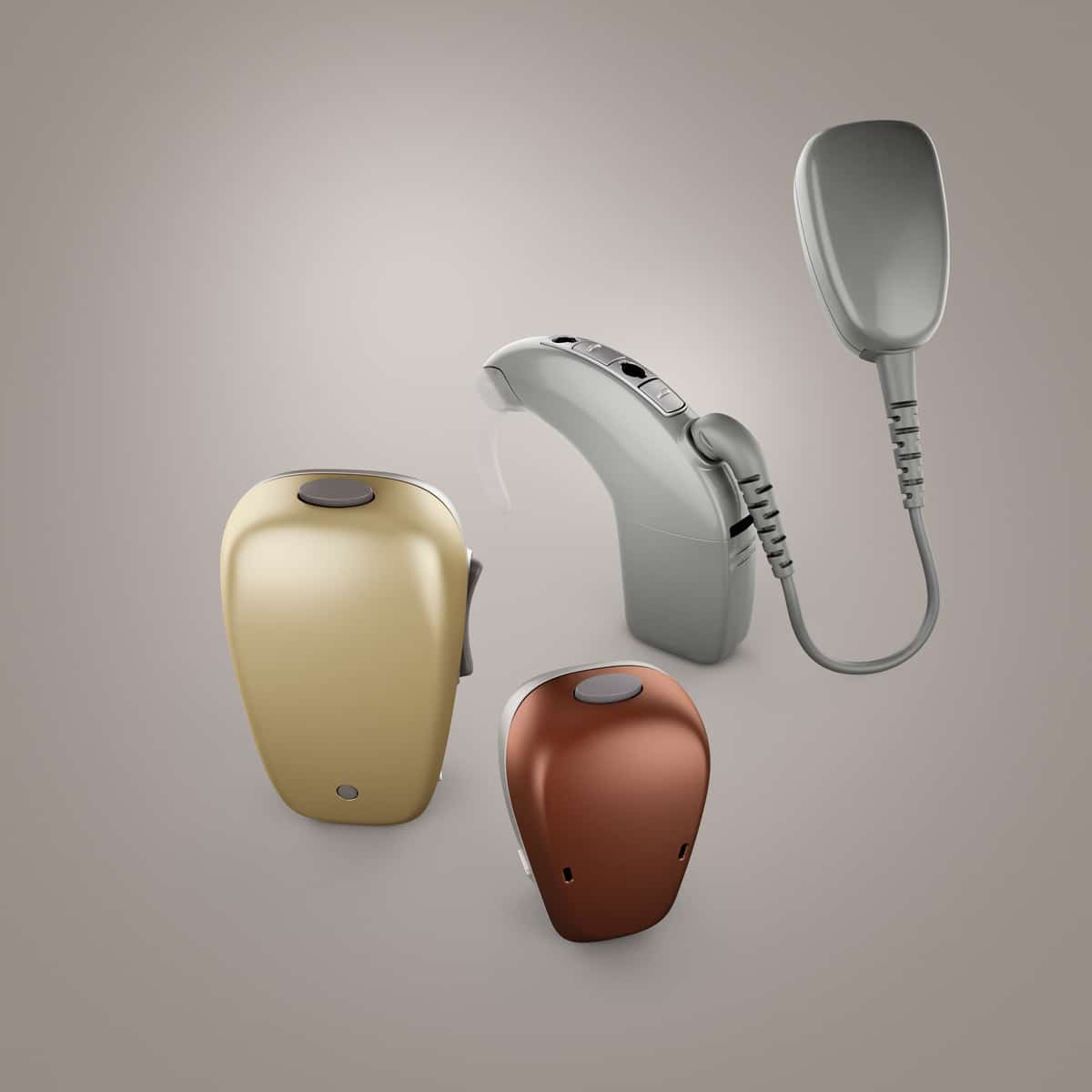Bone-anchored hearing aids (BAHAs) are a surgically-implanted specialty treatment option for certain types of hearing loss. They work by transmitting sound via bone conduction to the inner ear, as opposed to traditional hearing aids which amplify acoustic sound to a level the inner ear can detect. Below is some basic information about how BAHAs work, who the best candidates are and how the devices are implanted.
How Do Bone-Anchored Hearing Aids Work?

BAHAs have two parts: an external sound processor and a titanium bone implant. The processor picks up soundwaves and converts them into vibrations. The attached implant vibrates in response, and the sound is conducted through the skull and jaw bones to the inner ear. There, the tiny hair cells called stereocilia fire the auditory nerve, sending sound information to the brain where it is interpreted.
Who Is a BAHA Candidate?
BAHAs do not work for every type of hearing loss. They are recommended for people with conductive hearing loss – which means there is a problem with the outer or middle ear preventing sound from traveling through – who do not have success with traditional hearing aids.
For these candidates, BAHAs work by bypassing the damaged part of the ear and sending sound through the skull rather than through the regular mechanisms of the outer and middle ear. Traditional hearing aids can be ineffective against this type of hearing loss due to soundwaves being blocked.
BAHA candidates must have one inner ear that functions normally. Many BAHA candidates experience unilateral hearing loss or single-sided deafness. Other candidates include those who suffer from chronic ear infections or those who have extreme allergies to materials used in traditional hearing aids.
How Is the Device Implanted?
BAHAs are implanted during an outpatient surgical procedure. During the procedure, a three- to four-millimeter implant is placed into the mastoid bone behind the ear. The implant has a small abutment outside the skin to which the processor is attached via clip or magnet.
The logistics of the operation vary depending on the manufacturer you choose for your device. A common procedure called MIPS (minimally invasive Ponto surgery), compatible with Oticon devices, takes an average of 15 minutes to perform under local anesthesia. Recovery takes one to two days before you can return to regular activities.
Over time, the implant integrates with the bone. Once the skull and skin have healed, which varies between three weeks and three months depending on the person and the device, the processor can be attached and programmed. Some adjustment may be needed, but you should be able to hear new sounds right away. For more information about BAHAs or to schedule an appointment with an audiologist, contact Hampton Roads ENT today.
